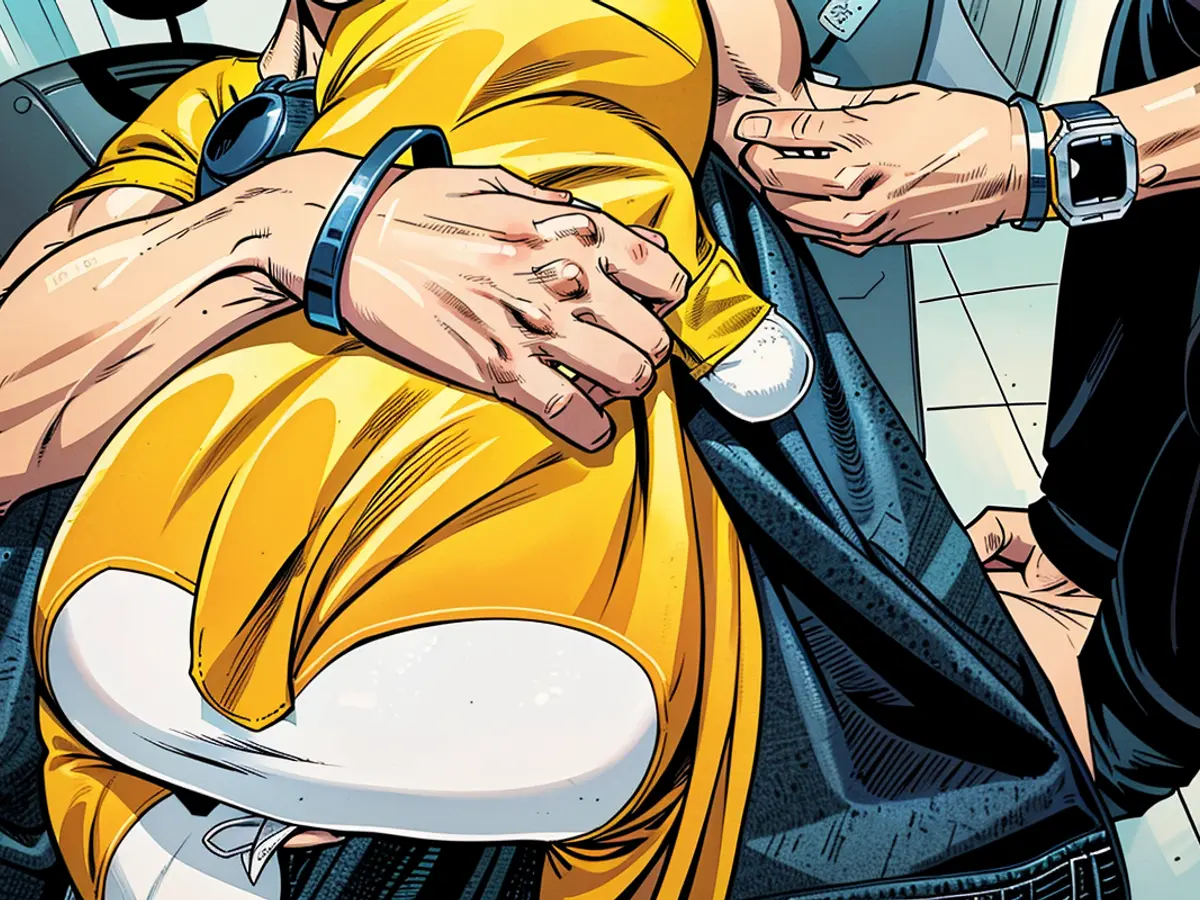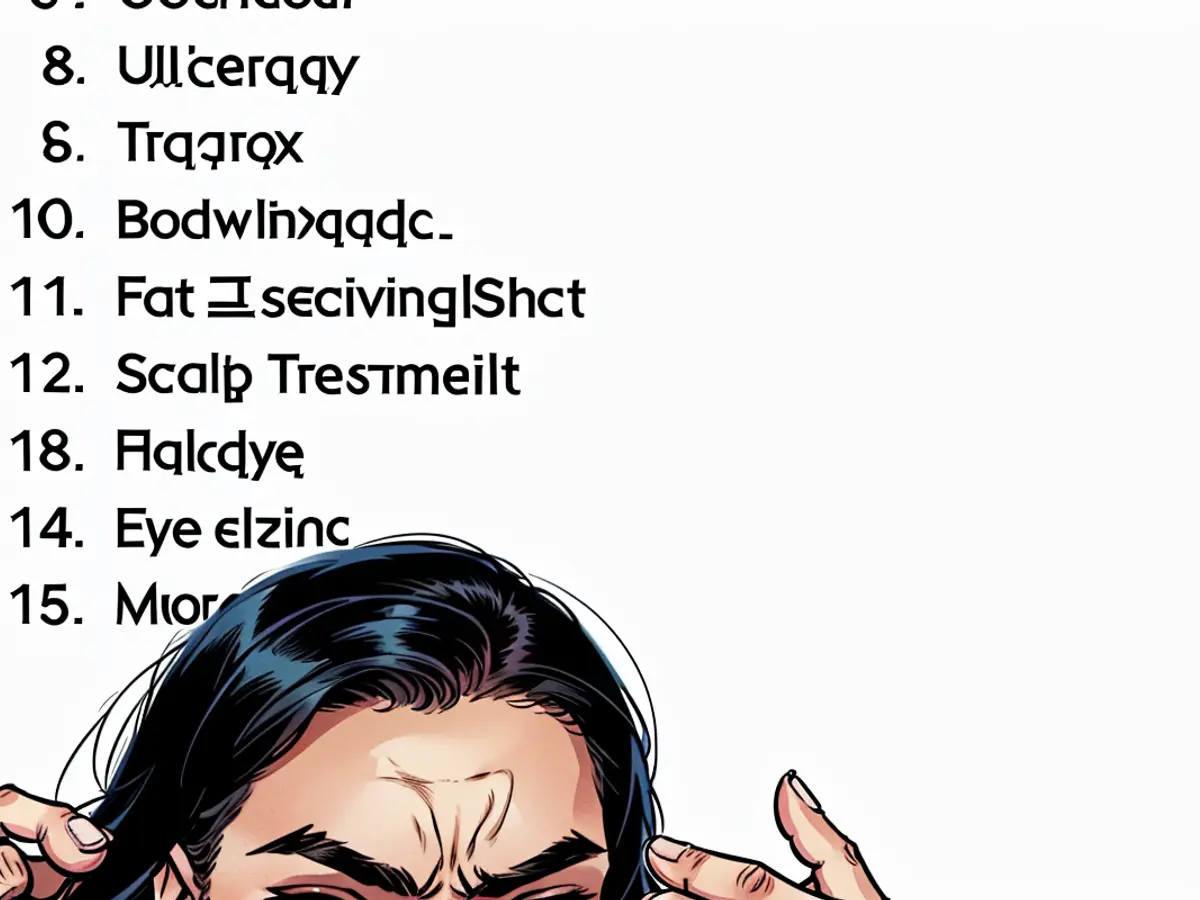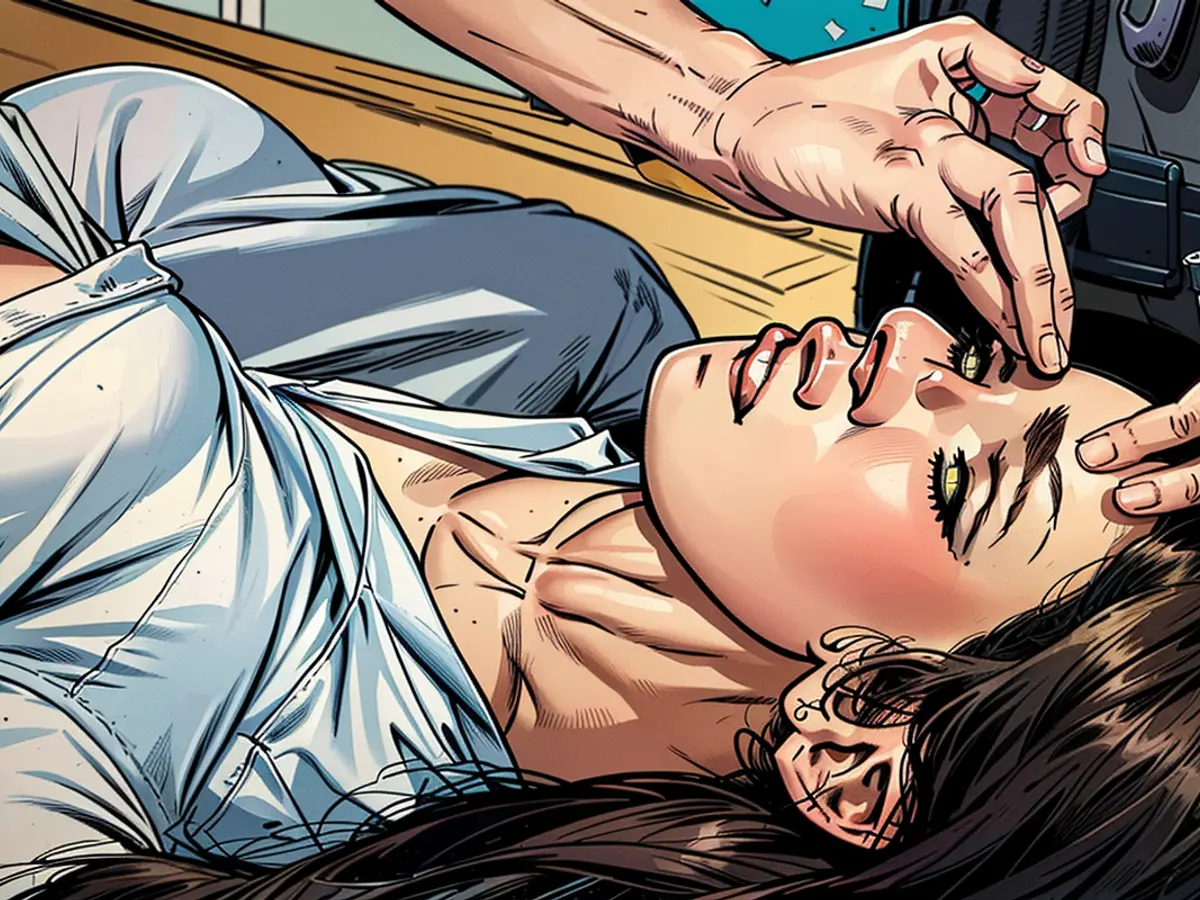What it’s like to undergo 15 beauty treatments in just 3 days in South Korea
Lee said she got 15 services done in the span of three days during her trip, sharing the list in a TikTok video from her account, @taxinoodle, that now has over 1.2 million views.
It’s no secret that Seoul has become a global beauty capital in recent years, known for its focus on skincare and makeup, as well as its famous plastic surgery clinics. But non- or minimally- invasive procedures have also become a popular way to achieve a seemingly-flawless natural look, emphasizing delicate, hyper-feminine features, glowy skin and glossy hair.
“A lot of women will get these treatments done every few weeks (for) their nails or their hair,” said Lee, referencing the regular upkeep of salon manicures, body waxing and blowouts — some of which have flourished into billion-dollar industries in South Korea. “These procedures have been around for so long.”
As the goalposts for what is considered beautiful continue to shift, cosmetic injectables and the type of treatments she underwent are also increasingly routine, she added.
Lee, who was raised in South Korea until the age of 11 and is now based in New York City, began getting beauty treatments in the US. “Now that I’m in my mid-20s... I started getting a little Botox here and there, but I prefer to do it in Korea because the price is unbeatable,” she said. She flies back regularly to get small touch-ups, but had never gone back for this many in one go until this year.
“The price benefit — you can’t ignore that,” Lee said. “Getting a plane ticket to Korea to get Botox and filler done is honestly cheaper than getting it done here.”


While the added costs of a plane ticket and hotel stay may not be cheaper than getting a single appointment at home, the savings can rack up over multiple treatments. Botox for Lee’s forehead, jaw and eyebrows ran her about $70 in Seoul, for example. The same amount of Botox would ring in anywhere from $500 to $1,400 in New York City.
For some, there’s the benefit of being able to travel while also getting these cheaper treatments done; in the creator economy, there’s also value (think monetized videos) in sharing such journeys on social media. Influencers offer tips on the best treatments to book when you only have a few days in the country or film their “glow-up days,” beating a constant refrain of affordability and innovative technologies. “Did u even go to Korea if u didn’t get a facial,” one TikTok user captioned their glow-up vlog.
“It’s becoming more common, and kind of like a trend, to talk openly in Korea about what procedures you get and share tips,” Lee added. Due to South Korea’s strict advertising laws, clinics often rely on word of mouth, so Lee leaned on friends and family for recommendations. “Beauty scams are also really common,” she added. “So that can make it harder for people who are visiting or don’t speak the language.”
Lee is currently developing a website and database to provide tips and resources for people interested in traveling to South Korea for K-beauty treatments, in order to help non-Korean speakers.

Medical and beauty tourism is a major source of revenue for the country. Last year, the South Korean Ministry of Health and Welfare announced it will ease immigration procedures for tourists coming to the country for medical purposes, including cosmetic surgeries, aiming to attract 700,000 medical tourists by 2027. Last month, the ministry announced that the number of tourists who visited South Korea for cosmetic procedures reached an all-time high of 605,768 in 2023 — a 144.2% increase from the previous year.
Don’t be led by low prices alone, do your research
This means that the available products and services are expanding — and can even be “overwhelming,” Lee noted, though the competition has helped push down prices. Lee’s procedures ran as low as $19. That said, consumers should be wary of very cheap treatments. Vendors are split broadly into two categories, she said: factory clinics and boutique clinics. “(At) factory clinics, you don’t see a doctor — you know exactly what you’re there for,” she explained. You can be in and out in 10 minutes... It’s for people who know what they’re doing, and these clinics are a lot cheaper.”
“For travelers or first-timers, I would avoid them,” she added. “You should be doing your research and you should sit down with a doctor who can tell you what you should be looking for.”
Lee said when she went to boutique clinics, however, she was able to speak with a medical professional ahead of each procedure, learning what exactly the injectable or laser or treatments would do to her body and getting a more in-depth walkthrough of what to expect for the procedure and healing process. Many boutique clinics, she noticed, also had better options for non-Korean speakers.
A K-beauty odyssey, for the social media age
Lee visited six different clinics, the majority located in Seoul’s Gangnam neighborhood, which has long been known for its wealthy residents and emphasis on beauty (and, of course, was the inspiration behind K-pop star Psy’s viral 2012 hit, “Gangnam Style”). “Every ad and billboard you see will be for a plastic surgery clinic or something like that,” Lee said of the area. The term “Gangnam unnie” (Gangnam sister) emerged years ago to describe bandaged patients — those who had more drastic procedures done — coming out of one of the district’s many plastic surgery clinics. It has since become a derogatory term, “like, you look fake and plastic,” Lee explained.
She started with an appointment to have her eyebrows microbladed ($225), before visiting a vision center to have her irises measured. (The service, offered to Lee for free, is done to help consumers purchase the right size of colored lenses.)
On her next stop, Lee was put under general anesthesia to undergo a series of treatments at a plastic surgery clinic. This was her most intensive visit, she said — figuring she may as well make the most of being put under. All of the procedures targeted her face: three kinds of collagen-promoting “skin booster” injectables, including Juvelook (one vial, $400), Juvelook Volume (two vials, $830) and Rejuran Healer (one vial, $330); Botox ($70) in her forehead, jaw, and between the eyebrows; CO2 lasers ($8) that zapped off moles on her face and neck; and 600 shots of Ultherapy ($1,275), an ultrasound treatment that is intended to stimulate collagen production and define features.

“Ultherapy is well known to be the most expensive and effective procedure, as well as the most painful one,” she said. “That’s what left me with the most bruising and swelling after. I know some people get it done without going under, and I always see videos of people crying. They give you a very fluffy plushie to hang onto.”
At a second plastic surgery clinic, Lee got a few more procedures focused on her body, including Botox in her trapezius muscle, known as Traptox ($300), to get that “Jennie (Kim) shoulder look,” Lee said, referencing the Blackpink star’s coveted angular shoulders. She was also given fat dissolving shots ($150) in her arms — a procedure often called lipolysis in the US — and a Body InMode treatment ($600), which uses heat and radio frequency to remodel tissue for a tightened look. She had a few more moles lasered off with CO2 ($11) to round out the day.
At a third clinic, Lee received an additional InMode treatment focused on her chin, as well as additional fat-dissolving shots — aiming to achieve the tapered V-line face shape that has become a K-beauty standard. These treatments would normally cost $30 and $34 respectively, but Lee was offered them for free in exchange for potentially covering the experience on TikTok.
“My bruising lasted a whole two weeks, and swelling didn’t go down for three weeks,” she said. “It’s hard to say what one thing had the biggest effect on my face, though, because I got them all done at once. But there’s definitely a difference.”



Lee always gets her hair dyed ($125) in SouthKorea because she prefers the pricing and service. On this trip, she received a personalized “stem cell scalp” treatment ($190), and on TikTok claimed that light therapy given as part of the service helped to improve blood circulation, while various other techniques were used to reduce scalp buildup. Several Seoul-based clinics have gone viral on TikTok for using AI and other high-tech accessories to examine scalp health and address hair issues.
Lessons learned
The total cost for all of her procedures came out to $4,578. While the entire experience might seem like a lot, which is partly why she was inspired to post about it, Lee said she was happy with her services. But she emphasized that her satisfaction was partly due to the amount of homework she did beforehand to figure out which clinics were reputable and best suited to her needs. “It’s easier if you speak Korean,” she admitted, as many of the deals she found were through word-of-mouth or Korean social media apps.
Those looking to undergo treatments — at home or abroad — should conduct thorough research and be aware of issues such as scams, product safety and a clinic’s practices and reputation.
In a follow-up video on TikTok, Lee listed five things she would have done differently during her trip to Seoul, such as allowing for more recovery time and better understanding procedures’ side effects (her skin “swelled so much” after skin boosters that she was scared she was having an allergic reaction). In hindsight, Lee said she should have gotten everything done by one doctor, who could then advise on the optimal order of procedures, rather than at various clinics. (She spread the procedures out across multiple clinics for her own research purposes).
Lee said she doesn’t judge people who undergo procedures to fit certain beauty standards.“I want to shine a light on this side of beauty,” she explained. “Even just scrolling through TikTok, so many fans of Korean stars will swear, ‘I know she didn’t get anything done like other people,’ but this area of non-plastic surgery treatments is just so common. It’s not a bad or good thing, it’s just so ingrained in the culture.”
- Lee mentioned that she prefers getting certain beauty treatments in Korea due to the affordable prices, stating, "Now that I’m in my mid-20s... I started getting a little Botox here and there, but I prefer to do it in Korea because the price is unbeatable."
- While discussing her trip to various clinics in Seoul, Lee mentioned a particular procedure she underwent, saying, "I also received a personalized 'stem cell scalp' treatment at a clinic, which I believe helped improve my hair health and blood circulation."








